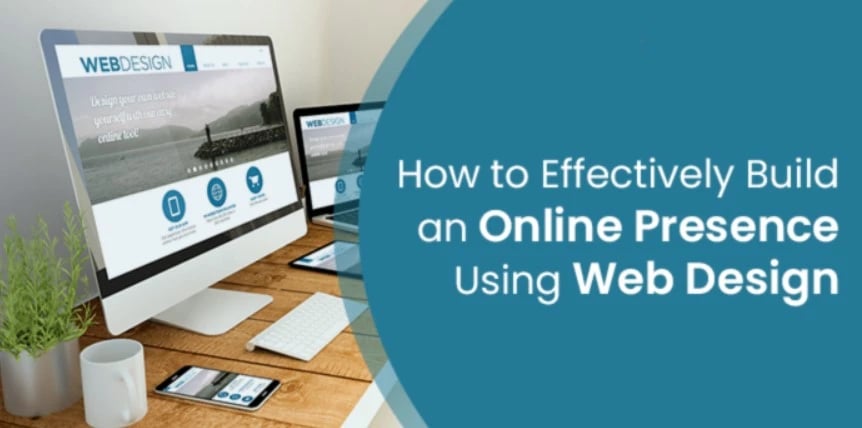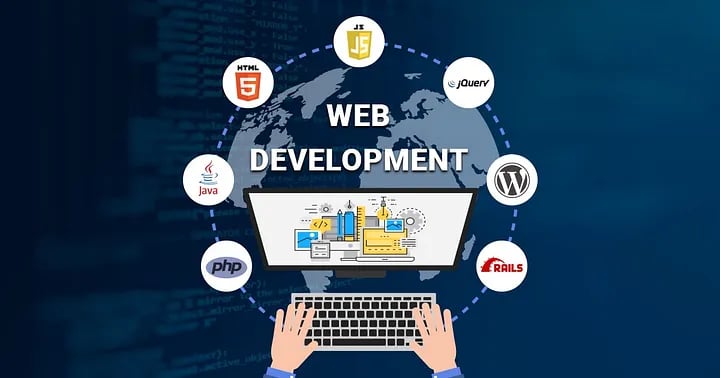
The SEO, the design of your website can make or break your business’s online presence. By implementing smart web design strategies, you can enhance your website’s SEO (Search Engine Optimization) making it easier for potential customers to discover you. This not only improves your search engine rankings but also helps convert visitors into leads. At Mister Nguyen Agency, we understand the importance of aligning your social media, design, and branding efforts to create a cohesive digital strategy that resonates with your audience. Let’s explore how smarter web design can drive traffic and foster business growth.
Understanding SEO and Web Design
Before exploring into the intricate layers of SEO and web design, it’s vital to grasp how these two components interconnect to boost your online presence. Effective SEO strategies rely significantly on the structure and functionality of your website, acting as a fundamental framework that allows your business to shine in search engine results. For an in-depth perspective on this synergy, check out Maximizing SEO With Web Design: A Practical Guide for 2024.
Definition of SEO

One of the primary goals of Search Engine Optimization (SEO) is to enhance your website’s visibility on search engines, resulting in higher organic traffic. This process involves optimizing various elements of your site, including content, keywords, and technical parameters, tailored to meet the preferences of both users and search engines like Google. Effective SEO ensures your business can compete effectively in the digital landscape, ultimately leading to increased leads and conversions from potential customers.
Additionally, SEO is not a one-time effort; it requires continuous optimization and adaptation. As search algorithms evolve, staying informed about the latest trends and techniques in SEO is vital for your business’s long-term success. By integrating SEO into your web design from the outset, you create a holistic approach that positions your site favorably against competitors.
Importance of Web Design in SEO
Design plays a crucial role in how users and search engines perceive your website. A well-designed website is not only visually appealing but also ensures optimal functionality and user experience. This includes mobile optimization, fast loading times, and intuitive navigation—all elements that influence how users interact with your site. Consequently, these factors also affect your SEO ranking, as search engines prioritize websites that provide excellent user experiences.
Another key aspect of web design’s importance in SEO is its impact on conversion rates. If your website design facilitates easy exploration and engagement, you are likely to convert more visitors into leads and ultimately into paying customers. At Mister Nguyen Agency, we emphasize the creation of effective web designs that align with both your brand’s identity and SEO best practices, ensuring your business stands out online.
Relationship Between User Experience (UX) and SEO
User experience (UX) is fundamental in today’s digital ecosystem, and its relationship with SEO cannot be understated. When users find your website easy to navigate, informative, and visually appealing, they are more likely to stay longer and engage with your content. This behavior signals to search engines that your site is valuable, which can improve your rankings and visibility. A great UX leads to lower bounce rates and higher dwell times—two critical metrics that influence your position in search results.
Understanding how UX affects SEO allows you to create a website that resonates with your customers. By focusing on user-centric design elements, you ensure that your website serves their needs, resulting in a positive feedback loop: enhanced UX leads to better SEO, which in turn attracts more customers to your business.
Key Elements of Smart Web Design for SEO
Assuming you’re looking to enhance your business’s online presence, understanding the key elements of smart web design for SEO is crucial. The relationship between Web Design and SEO, means that your website needs to be strategically designed to not only attract but also retain customers. This will ultimately lead to more leads and enhanced engagement. By focusing on smart web design, you can lay a strong foundation for your SEO efforts, ensuring your business is easy to find in search results and appealing to visitors once they land on your site.
Responsive Design
Design is one of the most critical components of your website, particularly in today’s mobile-first world. With the majority of users accessing websites via mobile devices, your site must look and function flawlessly on all screen sizes. A responsive design guarantees that your website automatically adjusts to fit any device, providing a seamless user experience. Google prioritizes mobile-optimized websites in its rankings, so responsive design is not just a trend; it’s a necessity for your business’s visibility online.
Moreover, a responsive site helps keep your bounce rates low. When customers have a positive experience while navigating your site, they are more likely to stay longer and explore what you have to offer, increasing the chance of conversion. At Mister Nguyen Agency, we emphasize the importance of responsive design in our web development strategies to ensure that your business thrives in the competitive online landscape.
Page Load Speed Optimization
One of the most vital elements that impact your site’s SEO is page load speed. If your website takes too long to load, visitors are likely to abandon it and seek out your competitors. Statistics show that a one-second delay in page loading can result in a 7% reduction in conversions, meaning that every second counts when trying to attract and retain customers. Prioritizing load speed not only improves user experience but also enhances your search engine rankings.
To optimize your page load speed, you can compress images, utilize a content delivery network (CDN), and streamline your coding. Regularly monitoring and enhancing your site’s performance can make a significant difference in your SEO efforts. At Mister Nguyen Agency, we focus on ensuring that your website is not only beautiful but also performs efficiently, paving the way for increased leads and business success.
Clean and Organized URL Structure
Structure is another often-overlooked aspect that plays a significant role in your website’s SEO. A clean and organized URL structure makes it easier for search engines to crawl and index your website while giving users an easily understandable path to navigate. Using concise, keyword-rich URLs can help both customers and search engines understand the content of your pages better, enhancing your visibility in search results.
Content Strategies for Enhancing SEO

Once again, the importance of creating high-quality content cannot be overstated when it comes to optimizing your website for search engines. Your content serves as the foundation that supports your SEO efforts, acting as both the bait for attracting customers and the information hub that keeps them engaged. High-quality, relevant content not only helps to improve your search rankings but also establishes your business as an authority in your industry. By investing in robust content strategies, you can effectively increase your leads and customer engagement while enhancing your overall brand presence online.
Importance of High-Quality Content
To truly enhance your SEO, it’s paramount that you prioritize high-quality content that answers the questions and meets the needs of your audience. Search engines like Google are designed to reward valuable content that provides real answers and insights. When you deliver informative content tailored to your customers’ inquiries, your website gains credibility and authority, translating into better search rankings. Furthermore, consistently updated and relevant content keeps your audience returning and encourages them to view your business as a trusted source.
Implementing Keyword Research
An effective SEO strategy must begin with comprehensive keyword research, allowing you to identify the terms and phrases your potential customers are using to search for your services. By understanding the keywords relevant to your business, you can strategically incorporate them into your content to improve your website’s visibility. These keywords should be naturally woven throughout your articles, blogs, and web pages, ensuring that your content resonates with both search engines and your target audience.
For instance, leveraging tools like Google Keyword Planner or SEMrush can provide you with insights into popular search queries within your industry. This allows you to discover long-tail keywords that specifically target your business services, driving more qualified leads to your website. By aligning your content with the keywords that your customers are using, you maximize your chances of ranking higher on SERPs, which directly correlates to increased traffic and potential sales.
Creating Engaging and Informative Blog Posts
Posts that are not only informative but also engaging can significantly boost your SEO outcomes. Blog posts are a powerful tool for creating content that resonates with your audience, allowing you to express your expertise while addressing their needs, questions, or challenges. When your blog content engages your readers, it encourages sharing on social media platforms, further enhancing your reach and driving traffic back to your website, which signals to search engines that your content is valued.
Blog articles also serve as a fantastic opportunity to implement the keywords discovered during your research. By integrating these keywords thoughtfully into your blog posts, you are necessaryly crafting entry points for potential customers searching for your services. Engaging content that meets user intent can not only reduce bounce rates but also increase the average time spent on your site, which will contribute positively to your rankings.
On-Page SEO Best Practices

Now that you understand the importance of web design for boosting your SEO, it’s crucial to examine specific on-page SEO best practices that can make your website stand out. Optimizing your web pages effectively can improve your search engine rankings, making it easier for your customers to find your business online. In this section, we’ll explore crucial tactics, including the use of meta tags, header tags, content structure, and image optimization techniques to enhance your site’s visibility.
Use of Meta Tags
Best practices for meta tags involve ensuring that each page on your website has unique meta titles and descriptions that accurately reflect your content. These tags are integral as they serve as the preview text for search engine results, influencing whether or not potential customers click on your link. By including relevant keywords naturally, you can enhance your chances of appearing in search results related to your business, helping to drive targeted traffic and generate quality leads.
Additionally, keep your meta titles around 50-60 characters and your meta descriptions between 150-160 characters. This ensures they display correctly in search results, thus improving user experience and promoting higher click-through rates. With a well-structured approach to meta tags, you not only enhance your SEO efforts but also present a professional brand image to potential customers.
Header Tags and Content Structure
For optimal SEO performance, implementing header tags (H1, H2, H3, etc.) is crucial for structuring your website’s content. These tags help search engines understand the hierarchy of information on your pages. By using an H1 tag for your main page title and H2 tags for subsections, you make it easier for both search engines and users to navigate through your content. This method not only results in a better user experience but also improves the overall readability of your web pages.
Header tags assist you in incorporating relevant keywords and phrases, which boosts your on-page SEO and aligns your content with what your target customers are searching for. Content should flow logically under each header, ensuring that your readers find the information they need quickly. By focusing on an organized content structure, you create a more engaging experience for visitors, which can lead to increased conversions for your business.
Image Optimization Techniques
Tags play a pivotal role in enhancing image optimization on your website. By using descriptive file names and alt text for each image, you improve your chances of ranking in image searches and enhance your website’s overall accessibility. Bear in mind, search engines cannot ‘see’ images, so providing context through alt text ensures that your images are indexed correctly, which can drive additional traffic to your website from images and improve your SEO rankings.
Furthermore, optimizing image size can significantly reduce your page load time, which is a critical ranking factor for SEO. Tools such as compression engines can help you reduce file sizes without sacrificing quality. A faster website not only improves user experience but also helps keep visitors engaged, ultimately increasing the likelihood of converting them into leads for your business.
Practices like these will help you create a robust foundation for your on-page SEO strategy. By focusing on how you structure your website through header tags, meta tags, and image optimization, you can significantly enhance your visibility on search engines. Bear in mind, your website serves as your digital storefront; ensuring that it is optimized for search engines can lead to greater visibility, attracting more customers who are looking for the services you offer.
Enhancing Navigation and Site Structure
Your website’s navigation and structure play a pivotal role in enhancing SEO and improving user experience. A well-organized website not only helps search engines crawl your content efficiently but also makes it easier for your customers to find what they need. By streamlining your site’s layout and providing clear pathways, you can significantly boost your visibility and lead generation efforts. Learn more about the Power of SEO in Web Design and Development to see how strategic design can propel your online success.
Importance of a Clear Navigation Menu
To create an effective website, you need to prioritize clarity in your navigation menu. A clear and concise menu structure allows users to effortlessly find information, increasing the likelihood of engagement and conversions. When your customers can easily navigate your site, they are more likely to stay longer, resulting in lower bounce rates and higher search rankings.
To further enhance your SEO, consider using descriptive labels for your menu items that incorporate target keywords relevant to your business. This practice not only aids users in understanding the available options but also signals to search engines what your content is about, boosting the overall authority of your website.
Internal Linking Strategies
With the right internal linking strategies, you can enhance the flow of link equity throughout your website. Internal links help distribute ranking power among your pages, making it easier for search engines to index your content. By directing your customers to related pages and relevant blog posts, you can keep them engaged while improving the overall navigation experience.
It’s important to use descriptive anchor text that provides context about what the linked page covers. This not only aids SEO but also enhances usability, giving your customers clear expectations about what they will find when they click a link. By employing strategic internal linking, you can drive traffic to your most valuable content, ultimately converting more leads into customers.
Hierarchical Structure for Content
With a well-defined hierarchical structure for your content, you can effectively organize information and make it easier for both users and search engines to understand. This means categorizing your content into clear sections, using headers to outline topics, and employing subcategories where appropriate. By defining a logical structure, you help guide your visitors on a journey through your website while improving SEO performance.
Structure your main topics at the top levels of your navigation, and nest related sub-topics beneath them. This hierarchy not only beneficially serves your customers as they navigate through your offerings but also lets search engines grasp the relationships between different pieces of content more effectively. The clearer your hierarchy, the better your chances for improved search rankings and customer engagement.
Mobile Optimization Techniques

Many businesses are now aware that having a mobile-friendly website is no longer optional; it’s a necessity. With the majority of users accessing the internet via mobile devices, Google has adopted a mobile-first indexing approach, which means it primarily considers the mobile version of your website for rankings. If your website isn’t optimized for mobile, you’re not only diminishing the user experience but also risking lower visibility on search engine results pages. At Mister Nguyen Agency, we understand that an optimized mobile presence is key to attracting and retaining customers, and ultimately generating leads for your business.
Importance of Mobile-Friendly Design
For your website to succeed in today’s digital landscape, it must provide a seamless experience across all devices. A mobile-friendly design ensures that your content is accessible and legible on smaller screens, which is crucial as users increasingly rely on their smartphones for online searches. This not only enhances user satisfaction but also boosts your credibility in the eyes of prospective customers and search engines alike. In fact, businesses with mobile-optimized websites tend to see a significant increase in organic traffic and higher conversion rates.
For your business to thrive, investing in mobile optimization is an investment in your long-term success. The mobile experience is where initial interactions with potential customers occur; thus, a thoughtfully designed mobile interface is imperative for engagement. With the right mobile optimization techniques, you can foster a better connection with your audience, leading to increased leads and a stronger brand presence.
Common Mobile Usability Issues to Avoid
Any website owner should be aware of common mobile usability issues that can hinder user experience and performance. Problems such as slow page load times, complicated navigation, and unresponsive design can lead potential customers to abandon your site in favor of competitors. Additionally, elements like small text, crowded layouts, and poorly sized buttons can frustrate users and deter them from engaging further with your content. Proper awareness and remediation of these issues can greatly enhance your mobile offerings.
With a focus on creating a clean and intuitive user interface, you can prevent many common mobile usability pitfalls. Key strategies include optimizing images and scripts to reduce load times and ensuring that navigation is straightforward, allowing customers to easily find the information they need. This attention to detail will serve to keep users on your site longer and encourage them to take the desired actions, whether that’s completing a purchase or signing up for more information.
Testing and Tools for Mobile Optimization
Importance cannot be overstated when it comes to testing your website for mobile optimization. It’s vital to assess how your site performs across different devices and screen sizes, ensuring that the user experience is consistently high. Using responsive design frameworks is a good start, but you also need to perform thorough testing. Tools like Google’s Mobile-Friendly Test can help you identify areas for improvement, including loading speed and usability issues that could affect your search rankings.
Your approach to testing should be proactive and ongoing, as continuous improvements to mobile usability can yield meaningful benefits. By regularly using analytics tools, like Google Analytics, you can observe user behavior on your mobile site and glean insights on how to optimize further. Utilizing A/B testing can also provide valuable feedback on design variations and their impact on user engagement.
Understanding the importance of mobile optimization tools will empower you to enhance your website effectively. Many resources are available, such as Google Lighthouse and BrowserStack, which can help simulate how your site appears and performs on various mobile devices. By utilizing these tools, you can efficiently identify and address any gaps in your mobile strategy, moving forward with the confidence that your website will keep your customers engaged and eager to explore what your business has to offer.
Key Takeaways: Boost SEO with Smart Web Design
1. **Mobile optimization enhances user experience and rankings. **
2. **Fast-loading websites attract and retain more customers. **
3. **High-quality content drives leads and boosts visibility. **
4. **On-page SEO techniques improve search engine understanding. **
5. **Ergonomic design increases engagement and reduces bounce rates. **
6. **Integrate social media for greater brand exposure. **
Conclusion
With this in mind, it’s clear that boosting your website’s SEO through smart web design is important for your business’s online success. By implementing the strategies discussed—such as mobile optimization, fast load speeds, high-quality content, proper on-page SEO, and a focus on user experience—you set the foundation for attracting more customers and generating valuable leads. Each element complements the others, creating a powerful synergy that enhances your site’s performance in search results.
Partnering with Mister Nguyen Agency ensures that you can effectively design your brand while maximizing SEO efforts. Our expertise in combining social media strategies with cutting-edge web design allows you to attract and retain customers, all while elevating your business’s online presence. Don’t underestimate the impact of smart design on your SEO; instead, take action today and watch your business thrive in the digital landscape.










